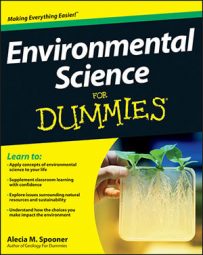Scientists who study living organisms examine them from different perspectives of complexity. The simplest level is the individual. Each individual is a member of a population. Each population is made up of a group of individuals of the same species that occupy the same environment and interact with each other.
Many different populations together make up a community, and many different communities interact with one another in an ecosystem. A group of ecosystems that interact with one another is called a biome, and all the biomes on the globe make up the Earth’s biosphere.
Examining populations, specifically, is useful because they grow, decline, and respond to their environment together. Scientists use a few common measurements to characterize populations:
Size: The size of a population is the number of individuals that make it up.
Density: The density of a population is the number of individuals (population size) in relation to the area they inhabit.
Distribution: The distribution of a population indicates where the individuals are located across the environment they occupy. For example, although 1,000 honeybees may live in your backyard, most of them stay in the hive, while only a few fly around to the flowers.
Sex ratio: The sex ratio of a population is the number of males versus females.
Age structure: The age structure of a population describes how many individuals fall into different age classes. For example, some populations consist mainly of young individuals, while others include individuals spread across many ages.

